
Procore is a thorough construction management platform that offers a wide array of features, including project management, financials, quality and safety and field productivity through a unified platform. However, for various reasons such as its pricing model and a learning curve, it may not be a fit for all kinds of users, especially smaller construction teams. In light of this, here are eight Procore alternatives that cater to various aspects of construction management.
Jump to:
Before we go into detail with each Procore competitor, here’s a summary of how Procore holds up against its alternatives.
Autodesk Construction Cloud is a powerhouse in the construction project management space, offering a suite of tools that cater to every phase of construction, from design to build to operations. Autodesk’s strength lies in its advanced Building Information Modeling (BIM) capabilities, which facilitate better design and construction coordination.
When billed annually, Autodesk Build offers 550 sheets at £48 ($59.45) per user per month, 5000 sheets at £84 ($104) per user per month and unlimited sheets at £157 ($194.44) per user per month. For unlimited users, you would need to get in touch with the sales team for a quote.
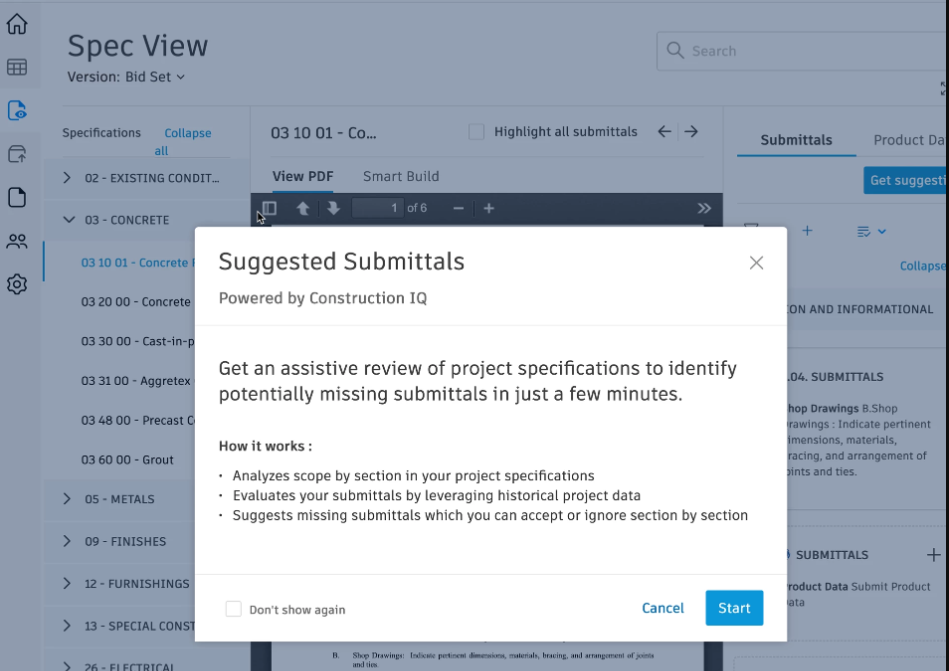
We picked Autodesk Construction Cloud for its vast suite of software that streamlines construction management from design to build to operations. Its advanced BIM capabilities and recent acquisitions have broadened its feature set, making it a formidable competitor to Procore for firms looking for a comprehensive solution.

Smartsheet is a dynamic, spreadsheet-like project management tool that’s highly adaptable to various business needs, including construction management. Its interface is familiar to anyone who has used Excel, but it comes with enhanced features like Gantt charts, automation and real-time collaboration.
Besides a free version, Smartsheet offers three paid plans, with the Pro plan costing $7 and the Business plan costing $25 per user per month for annual subscriptions. There’s an Enterprise but you’d have to contact Smartsheet for a quote.
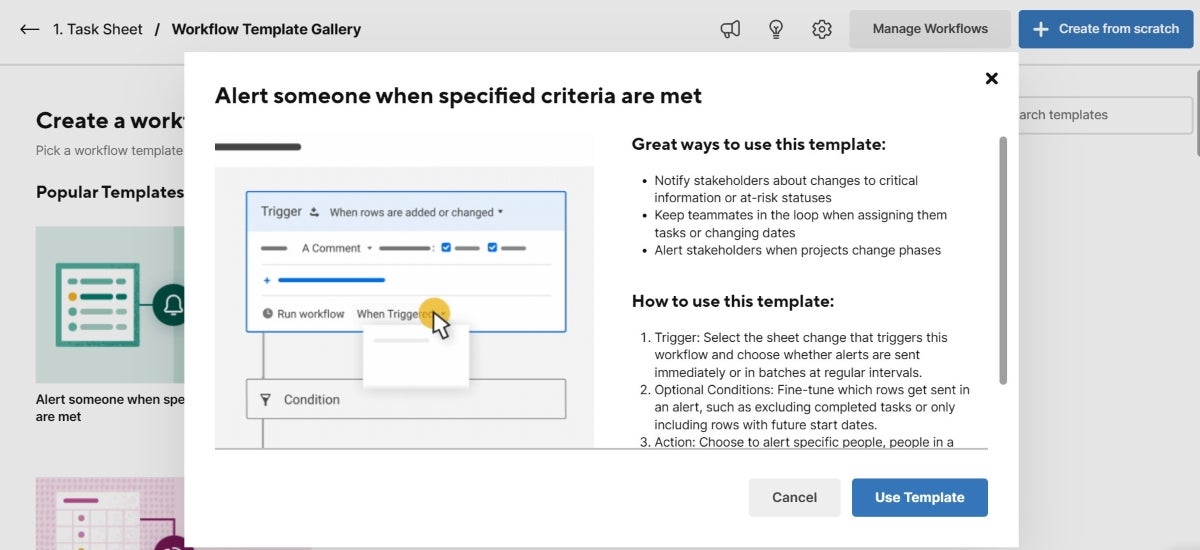
Pros
Smartsheet was our choice for its familiar spreadsheet-like interface coupled with powerful project management tools. Its adaptability to various business needs and enhanced features like Gantt charts and real-time collaboration make it an excellent alternative for teams seeking an intuitive spreadsheet-based construction project management solution.
For more information, read our comprehensive Smartsheet review.

Jobber is a Procore alternative tailored for home service businesses, including those in the construction sector. It excels in client relationship management, scheduling and dispatching. Jobber’s interface is user-friendly and it provides mobile apps that facilitate on-the-go management. Its strength lies in its simplicity and effectiveness for small to medium-sized businesses.
Jobber’s three paid tiers, Core, Connect and Grow are priced at $49, $129 and $249 per month when billed annually. Core supports one user, while Connect and Grow support up to 5 and up to 15 users respectively.
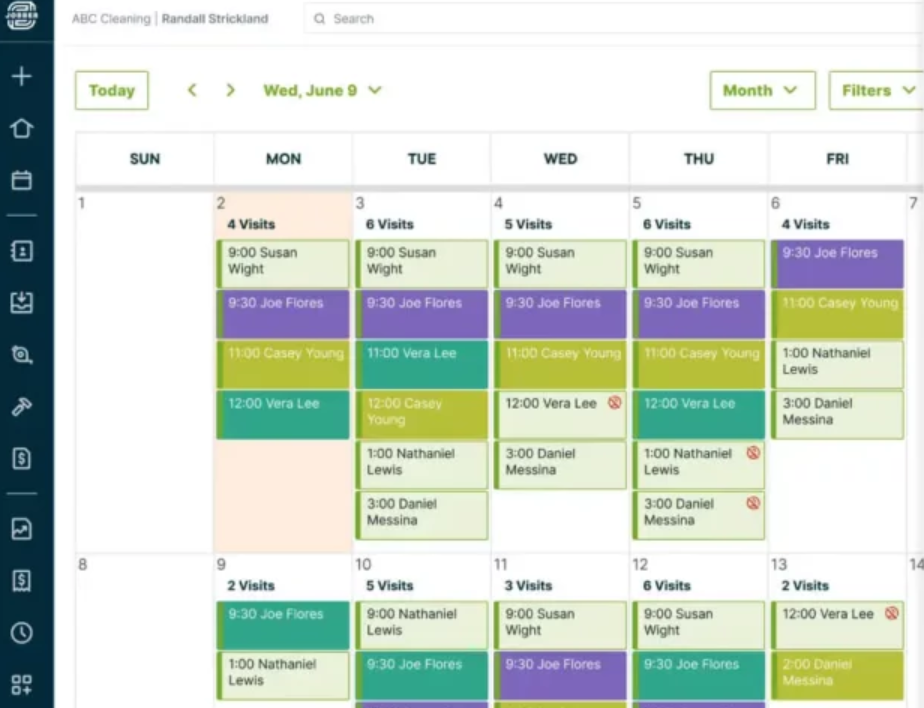
Jobber stood out to us for its focus on home service businesses, including construction. It combines client relations with organizing and dispatching teams via a user-friendly interface to streamline workflows and make it a straightforward construction project management solution for small to medium-sized businesses.

Fieldwire is a Procore alternative that focuses on the field aspect of construction management. It provides a robust mobile app that allows field workers and project managers to create, assign and update tasks on-site, making it a valuable tool for on-site project management and communication.
Fieldwire offers five subscription packages, including a free package and an Enterprise plan which requires prospective clients to contact Fieldwire for more information. When billed annually, the remaining three plans, Pro, Business and Business Plus cost $39, $59 and $79 per user per month respectively.
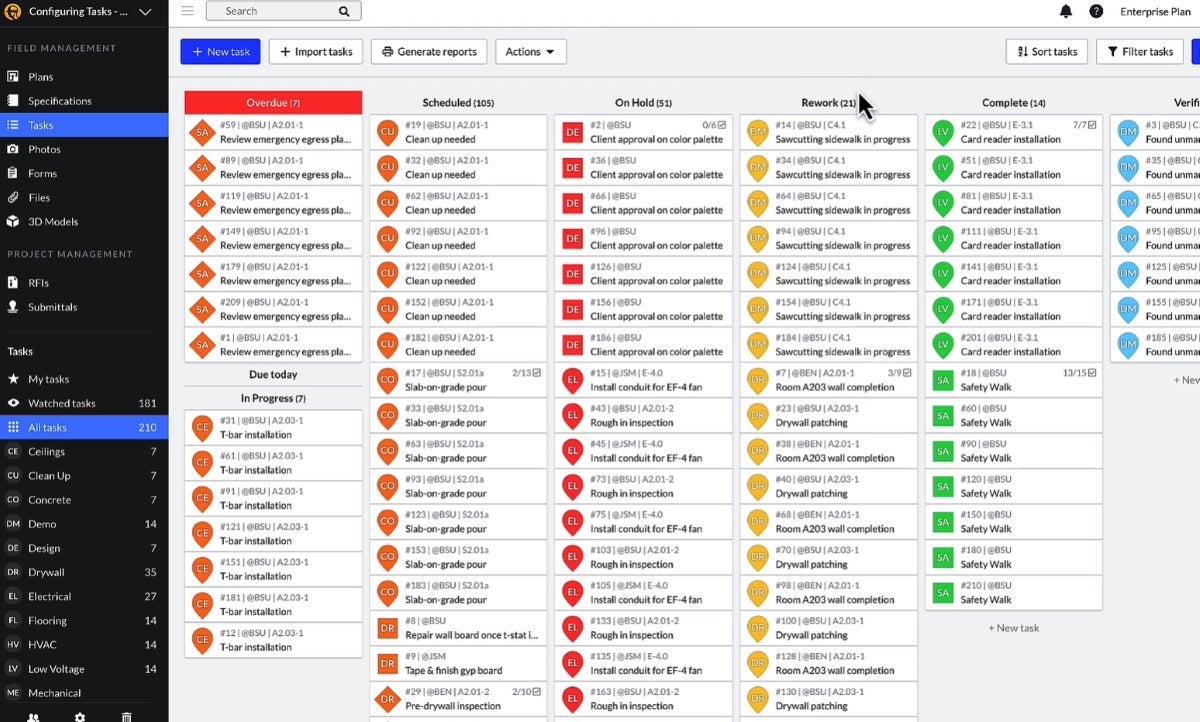
Fieldwire’s robust mobile app and focus on field management were key factors in our selection. Its capabilities in plan viewing, task management and real-time communication on-site make it a valuable tool for firms prioritizing efficient and effective on-site project management.

Acumatica offers a comprehensive ERP solution tailored for the construction industry. It integrates project management, financials, CRM and more into a single platform, making it a scalable solution for growing construction firms. Acumatica delivers a single source of truth for diverse teams to access information regardless of location or device.
Contact Acumatica for a quote, as pricing isn’t publicly listed.
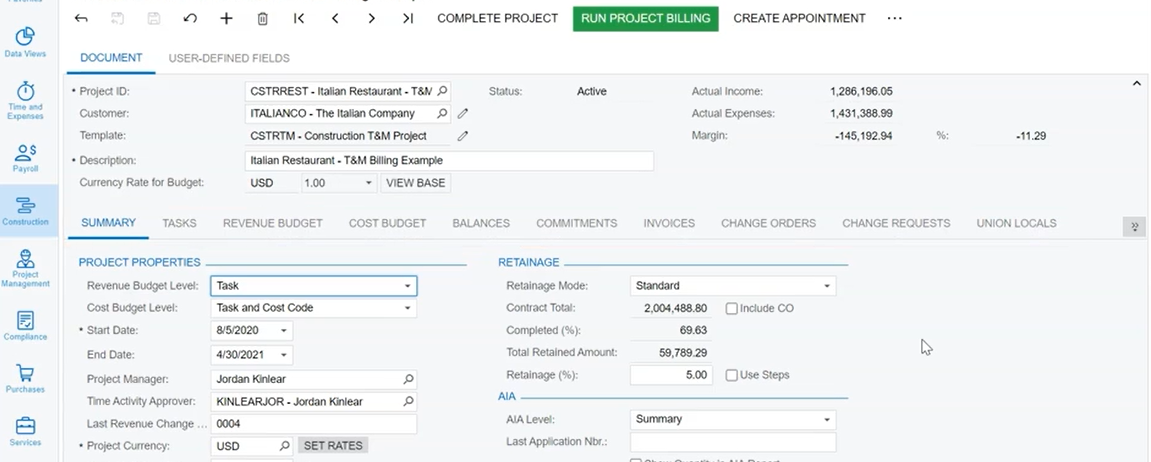
Cons
Acumatica Construction Edition impressed us with its extensive integration of project management, financials and CRM into a single platform to make it a scalable and comprehensive ERP solution for growing construction firms.

Buildertrend is an alternative to Procore that’s carved a niche in residential construction projects. It offers client portals, change order management and budgeting tools that are essential for home builders and remodelers. Buildertrend’s user-friendly interface and specialized tools make it a popular choice for residential construction firms.
Buildertrend offers the Essential, Advanced and Complete plans at a monthly cost of $99, $399 and $699 per month respectively.
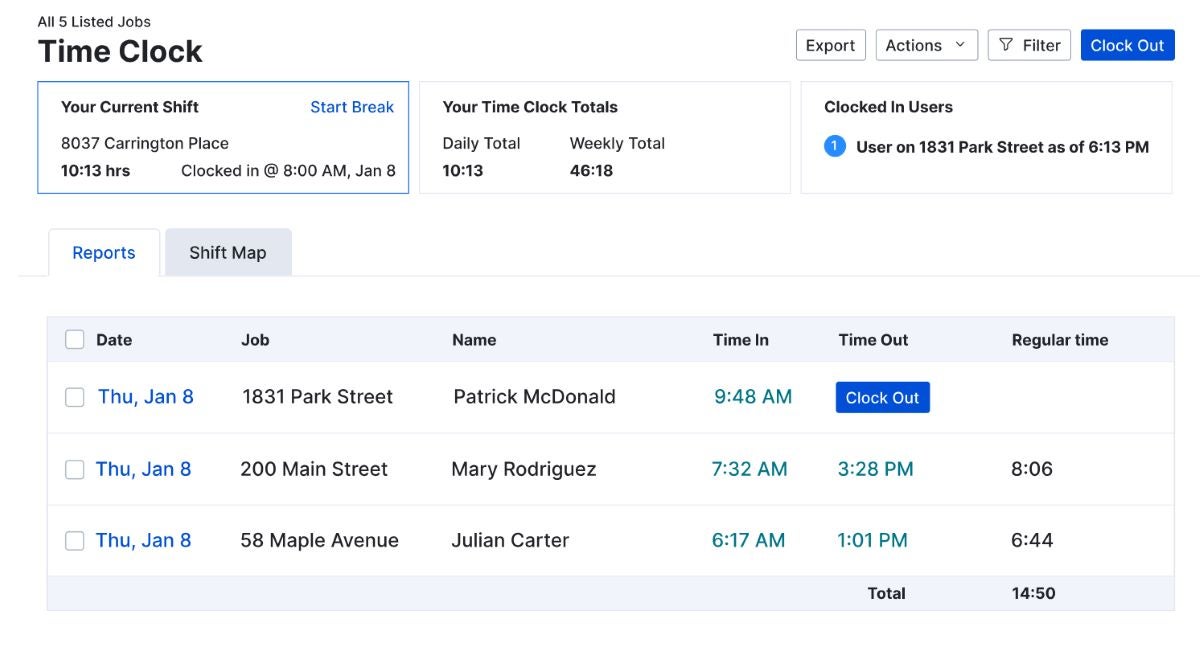
The customizability and scalability of Buildertrend’s construction management tools, including client portals and change order management, made it a clear choice. Its features are tailored specifically for construction projects and its user-friendly interface and focus on the needs of home builders and remodelers make it the software of choice for residential construction management.
For more information, read our comprehensive Buildertrend review.

Newforma is a project information management software that caters primarily to architects, engineers and construction firms. It excels in document management, project email management and seamless integration with other tools, making it particularly effective for large-scale projects.
Contact Newforma for a quote as pricing information isn’t publicly displayed.
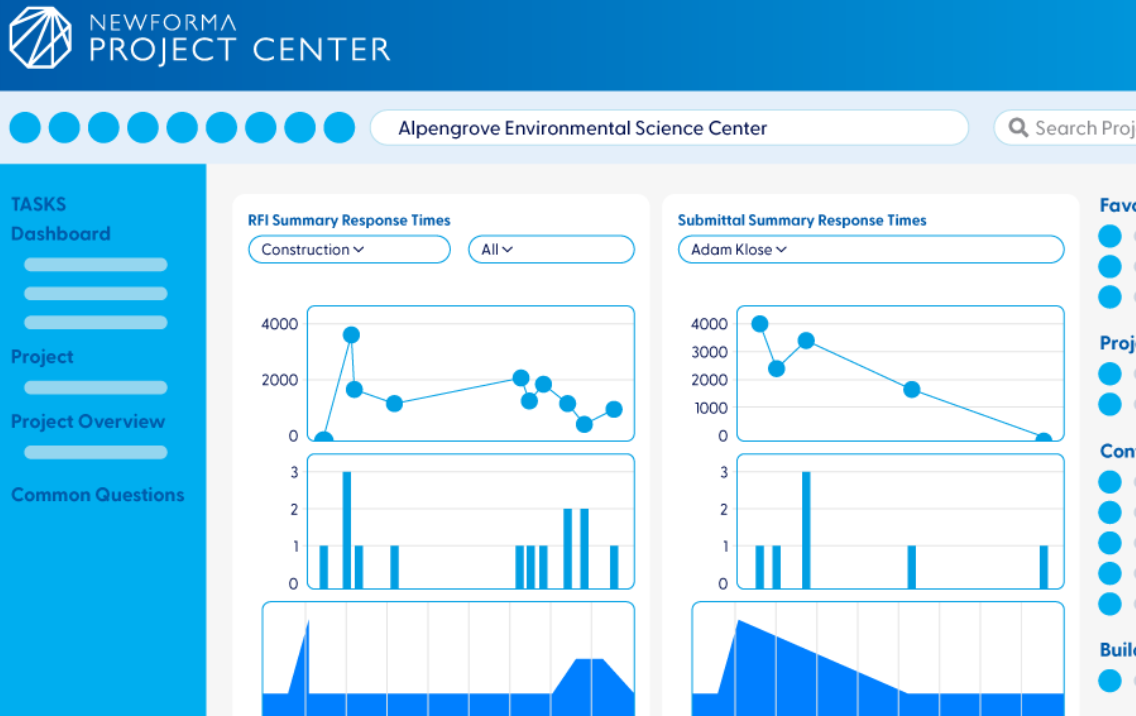
Newforma’s strength in managing vast amounts of project information, particularly for large-scale projects, was a deciding factor. Its document management capabilities in particular show how it suits professionals like architects and engineers as well as construction firms handling complex projects.

Oracle Primavera is a heavyweight in the construction management software arena. This Procore competitor offers a diverse suite of tools for project management, risk analysis and resource management that are quite suitable for large-scale projects. It also has detailed scheduling features and robust reporting capabilities.
Oracle sales encourage prospective clients to contact them as they haven’t listed pricing for this product publicly.
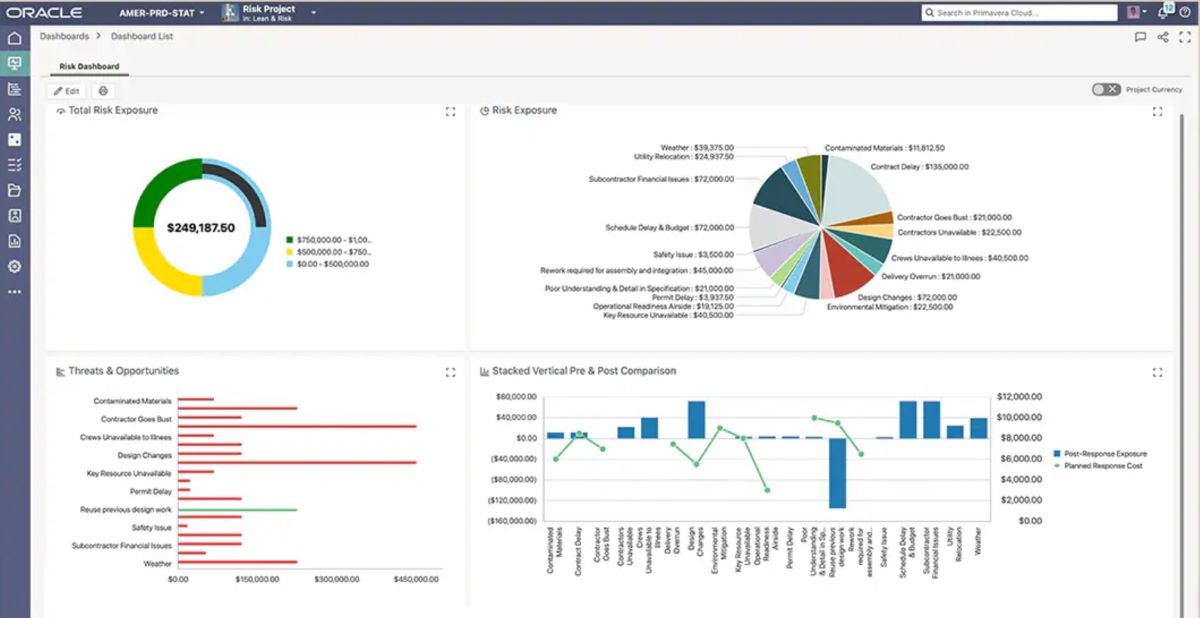
Oracle Primavera’s detailed scheduling and robust reporting capabilities make it a competent choice for enterprise-level projects. Its comprehensive suite of tools for project management and risk analysis positions underpin its capabilities in managing extensive and complex projects.
Whether Procore is worth it depends on several factors that vary from one construction firm to another. For larger construction firms with complex, multi-faceted projects, Procore may be the answer due to its wide range of features and integrations. On the other hand, smaller firms or those with less complex project needs might find Procore’s catalog to be more than they require.
The extensive roster of features and cost of the software, which is custom quoted, might not be justifiable for smaller projects, firms with tighter budgets or teams that prefer to have pricing information upfront without having to contact a provider first. In such cases, alternatives that offer more focused solutions or more transparent and flexible pricing models might be more appropriate.
Procore is a popular construction project management tool created to streamline construction projects and help stakeholders collaborate more efficiently. However, like any other software, it’s not perfect. Here are some of its strengths and weaknesses to consider:
| Pros | Cons |
|---|---|
| Huge feature catalog. | Notifications can get out of hand. |
| User-friendly interface. | Opaque pricing. |
| Lots of third-party integrations. | Variety of features can overwhelm users. |
| Strong reporting and analytics features. | Limited mobile app. |
While Procore is a solid construction project management platform choice, there are scenarios where businesses might seek alternatives. To determine where you lie, consider your needs, budget, project scale and complexity, team size and the level of collaboration you need.
If you find Procore’s feature set to be overkill, it may be time to consider alternatives. But what if a huge part of your decision-making is influenced by the integrations offered? Assess the compatibility of Procore with your current tools. If integration proves to be a challenge, alternatives that are more integrable should be considered.
Finally, if your projects demand specialized features that are missing in Procore, or if you’re looking for a more user-friendly interface with a gentler learning curve, it could be time to check out an alternative. In essence, the decision to stick with Procore or switch to an alternative should be based on a clear understanding of your business and how well it aligns with the features and capabilities of the available options.
For a closer look at Procore, check out our full Procore review.
From tens of tools, we shortlisted eight diverse construction project management tools that we saw to be different enough from Procore to be worthy alternatives. We then compared them not only to each other but also to Procore across their capabilities and pricing. A part of our research was informed by product listings on official product websites and datasheets.
Verified user reviews also formed part of our comparison, as we got to understand how real users interacted with the alternatives to Procore. Finally, we tested a number of the tools to get hands-on experience and inform our research even further.